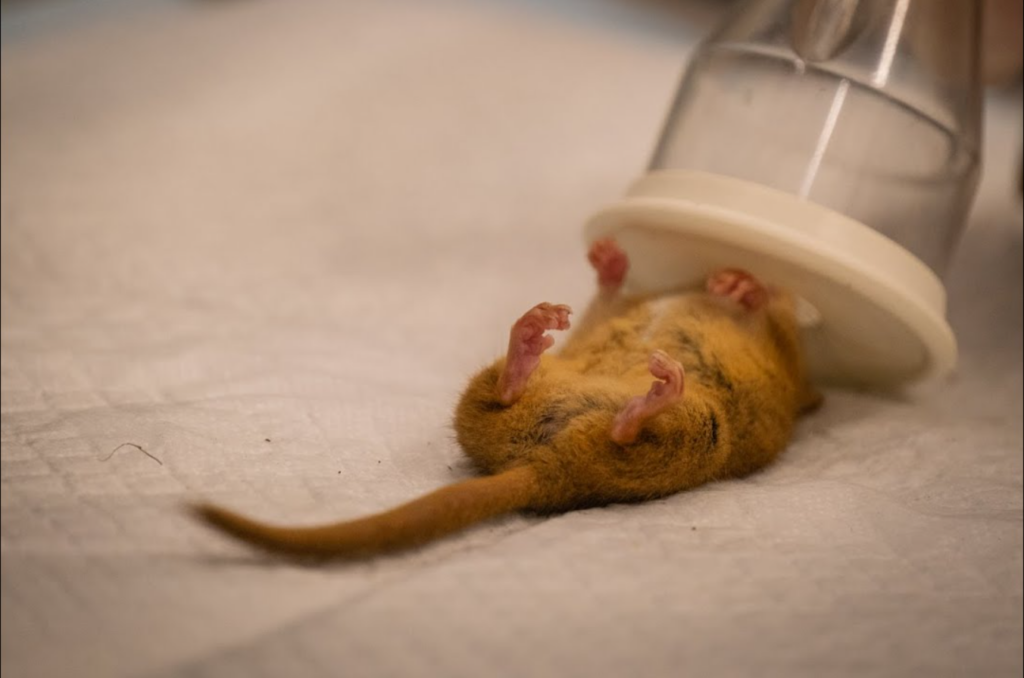Before wild release, rare dormice get full health checks 2023

Our vets checked rare British hazel dormice before releasing them into the wild next month as part of our conservation efforts to safeguard this tiny, fragile creature, previously prevalent across England and Wales.
Images and footage from yesterday show our expert vets at Institute of Zoology checking these sweet-natured rodents before releasing them to a secret woodland location as part of a long-term project to rebuild populations and restore the range of this native species.

Dormouse weight
In each 20-gram dormouse’s 10-minute appointment with the expert team, their heart and lungs were checked with a stethoscope, their eyes, ears, nose, teeth, and fur were visually examined, and a tiny microchip was gently placed under their skin for post-release monitoring.
Dr. Elysé Summerfield-Smith, health-check co-ordinator and wildlife veterinarian for our Disease Risk Analysis and Health Surveillance Team (DRAHS), said: “Hazel dormice were once found in woodlands and hedgerows across Britain, spending their nights feeding on berries and hawthorn flowers and their days curled up asleep in honeysuckle bark nests.
“While still common in mainland Europe, UK dormice numbers have drastically fallen over the last 100 years, linked to habitat loss, and the British population is now mostly confined to southern England and Wales, leaving these iconic native rodents vulnerable to extinction. Dormice are flagship species for their ecosystems, so restoring their homes and rebuilding their populations can assist birds, bats, and butterflies.

Dormice breeding
As part of Natural England’s Species Recovery Programme, we’ve reintroduced carefully bred dormice to locations around the nation since 1993. Conservationists hail the effort as a model of animal reintroduction.
Elysé continued: “Through our health checks we play a key role in fighting this ongoing decline, and for the last 30 years we have helped reintroduce over 1,000 dormice to 25 different sites across the UK – making the hazel dormouse one of the most successfully reintroduced species in the UK.”
Disease-proofing dormice
Along with health checks, our DRAHS team helps plan the reintroductions to ensure that the small golden-furred rodents have the best chance of survival and that the species already living in those habitats are not at risk of new infections.
Elysé said, “The team’s careful planning, health checks, and long-term post-release health surveillance aren’t just important for protecting the dormice, but it will also protect the species that they will be living alongside. We must prevent new diseases from entering habitats because they might kill native species.
Dormice are one of 30 species that ZSL’s DRAHS team works with, utilizing disease mitigation knowledge to support reintroduction efforts across the UK and abroad as part of ZSL’s larger work conserving species.
